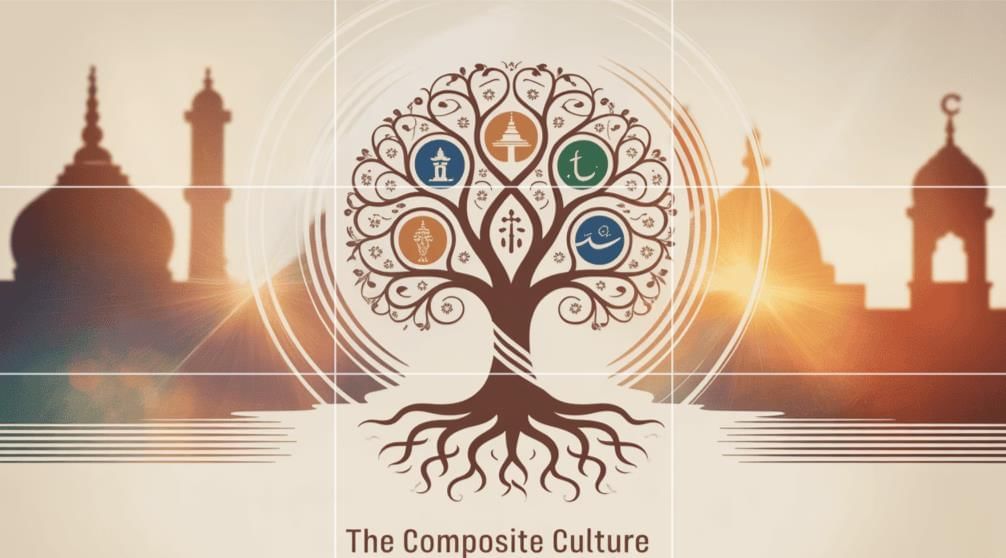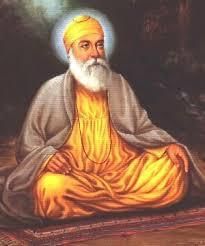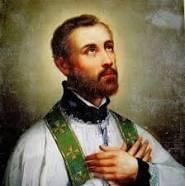The Composite Culture Bhakti Movement, Sufism and Influence of Christianity on Indian Chapter Notes | History Class 9 ICSE PDF Download
| Table of contents |

|
| Emergence of Composite Culture |

|
| Growth and Impact of Composite Culture |

|
| Sufism |

|
| The Bhakti Movement |

|
| Influence of Christianity |

|
Emergence of Composite Culture
In medieval India, different cultures came together to form a rich composite culture. Influences from Persian, Turkish, and Arabic traditions blended with Indian religions like Hinduism, Buddhism, and Jainism. This fusion shaped art, music, language, and architecture. Movements like Sufism and Bhakti promoted unity and spiritual harmony. Even Christian missionaries added to this cultural mix, making India’s culture more diverse and inclusive.

Growth and Impact of Composite Culture
- The Delhi Sultanate ushered in a new era of culture in India.
- A composite culture emerged from the blending of Turkish, Arabic, and Persian cultures with Hinduism, Buddhism, and Jainism, incorporating elements from both Hinduism and Islam.
- This unique fusion is referred to as Indo-Islamic culture, indicating a culture that was neither solely Muslim nor exclusively Hindu.
- The Mughal Empire played a crucial role in the further development and promotion of this composite culture.
Factors Leading to the Growth of Composite Culture
- The cultural heritage of the Mughals, along with the historical legacy of the Hindus, fostered religious tolerance and supported a composite culture that embraced elements from both Hinduism and Islam.
- Mughal wealth facilitated the patronage of writers, poets, and artists, thereby enriching fine arts and literature.
- The architectural achievements of the Mughals, which blended Hindu and Islamic styles, reinforced the composite culture.
- A prolonged period of peace and prosperity during Mughal rule allowed kings and nobles to invest in extensive artistic endeavours.
- The Bhakti Movement and Sufism were integral to the composite culture, emphasising devotion and spiritual expression.
Impact of the Composite Culture
- Mughal clothing, social customs, and festivals were adopted by the people and became integral to Indo-Islamic culture.
- The Turks introduced musical instruments like rabab and sarangi, along with new musical styles.
- Amir Khusro introduced Persian and Arabic ragas to India, leading to the creation of forms such as qawwalis and khayals.
- A notable painting project is the Dastan-i-Amir Hamza, which includes around 1,200 illustrations.
- During Akbar's reign, there was a fusion of Persian and Indian painting styles; interestingly, 13 out of 17 painters in Akbar's court were Hindus.
- The Persian influence in art diminished during Jahangir's period.
- Architecture displayed an Indo-Islamic style characterised by:
- Islamic features like spaciousness and grandeur enhanced Indian architectural designs.
- The Turkish preference for geometric and floral patterns, avoiding human or animal figures, often incorporates Quranic verses on walls.
- The inclusion of Indian symbols such as the swastika, bell, and lotus in architectural designs.
- The adoption of the Indian golden kalash by Muslims, who placed stone kalash on mosques and tomb domes.
- Indian architecture, exemplified by the temples in Vrindavan, reflected Mughal architectural styles.
- Turkish and Mughal architectural styles influenced the designs of palaces and forts built by local rulers.
- Persian was the official language of the Mughal court, which reinforced cultural connections with Persia.
- Urdu emerged from a blend of Persian, Arabic, Hindi, and regional languages, referred to as Zaban-e-Hindavi, which bears similarities to Hindi.
- Urdu thrived during the Mughal period.
- Translations of Sanskrit texts into Persian and Urdu were common.
- Prominent Urdu poets from this era include Amir Khusro and Mirza Ghalib.
Example: The use of a stone kalash on mosque domes, inspired by the Hindu temple’s golden kalash, shows how Mughal architecture blended Indian and Islamic elements, symbolizing cultural harmony in structures like tombs and mosques.
Sufism
- The spirit of religious tolerance and coexistence during this period gave rise to the Sufi and Bhakti movements.
- Sufism, a spiritual path within Islam, focuses on seeking divine truth and love through a personal connection with God.
- Sufi saints established 12 orders, known as silsilas, which signify an unbroken link between a master ( pir) and a disciple ( murid ).
- Among these, the Chisti and Suhrawardi orders gained prominence in India.
- The Chisti order was founded by Khwaja Muin-ud-Din Chisti, who settled in Ajmer in the 13th century. The Urs festival, honouring Khwaja Muin-ud-Din Chisti, is celebrated at his dargah (tomb).
- Notable Chisti saints include Nizamuddin Auliya, Sheikh Nasiruddin Mahmud, and Salim Chisti. The Suhrawardi order was established by Sheikh Bahauddin Zakariya.
Doctrines and Teachings of Sufism
- All religions are equal, emphasising the fundamental unity of all faiths.
- God can be approached through personal devotion and love, rather than merely through rituals and formal practices.
- The human soul is a reflection of the supreme God, highlighting the intrinsic connection between humanity and the divine.
- All individuals are equal, regardless of their caste, class, creed, or religion, promoting social equality and justice.
- Inner purity and self-discipline are essential for understanding and experiencing God, stressing the importance of spiritual and ethical conduct.
Impact of Sufism
- Sufism played a crucial role in fostering unity between Hindus and Muslims, promoting a sense of shared spiritual and cultural identity.
- Sufi teachings and practices encouraged rulers to be more tolerant and understanding towards different religious communities.
- Sufism fostered an appreciation for the diverse beliefs and practices of different religions, contributing to a culture of mutual respect and understanding.
- Sufi ideals influenced literature, inspiring poets like Amir Khusro and Malik Muhammad Jayasi to compose verses that celebrate the principles of Sufism and the unity of all faiths.
The Bhakti Movement
- The Bhakti Movement originated as a reaction against the caste system and ritualistic practices in India.
- It began with Vaishnava and Saiva saints in South India and gradually spread to other regions of the country.
- In the 11th and 12th centuries, the Tamil Vaishnavites promoted the idea of personal devotion to God as the path to salvation.
- Prominent figures such as Ramanujacharya, Kabir, Nanak, Namdeo, and Mirabai played significant roles in leading religious reform across various parts of India.
Doctrines of the Bhakti Cult
- Belief in one God who treats all people equally.
- Emphasis on reaching God through love, devotion, and salvation rather than through rituals.
- Advocacy for living a pure and simple life.
- Recognition of the importance of a guru or enlightened teacher in realising God or attaining salvation.
Impact of the Bhakti Movement
- The Bhakti Movement fostered universal brotherhood and religious tolerance, encouraging mutual love and respect within society.
- It promoted teachings in local languages, contributing to the development of vernacular languages.
- Figures like Kabir, Nanak, and Ravidas challenged the caste system and ritualistic practices, advocating for social equality and raising awareness about social issues.
Bhakti Saints
Kabir:
- He stressed the unity of God.
- He advocated for love and harmony between Hindus and Muslims.
- Kabir encouraged tolerance and submission to one God.
- He rejected the caste system, rituals, and idol worship.
- Kabir used dohas (couplets) to convey his teachings, which remain popular today.

Guru Nanak:
- He was born in 1469 at Talwandi, now in Pakistan.
- Guru Nanak taught that one God is the creator of the universe.
- He believed in the equality of all people, regardless of caste, promoting universal brotherhood.
- In Sikhism, spiritual knowledge is acquired through a Guru, who plays a crucial role.
- Guru Nanak emphasised the equality of all individuals on the path to God, irrespective of creed or sect.
Mirabai:
- Mirabai was a princess in Mewar during the time of Emperor Akbar.
- She renounced her royal life to dedicate herself to Lord Krishna.
- Mirabai composed devotional songs for Krishna, known as Padavali.
Influence of Christianity
- Vasco da Gama’s arrival in Calicut in 1498 AD marked the start of European trade and Roman Catholic missions in India.
- The initial spread of Christianity was mainly in Goa, Cochin, Tuticorin, and the western coastal areas.
- St. Francis Xavier, the first Jesuit missionary, arrived in India in 1542 and played a crucial role in spreading Christianity.
- Robert de Nobili was also significant in promoting Christianity in India.
St Francis Xavier
- After arriving in Goa in 1542, he focused on caring for the sick and sharing God’s message with the local population.
- In 1584, he sent three missionaries to major Indian cities to establish missions and spread Christianity.
- He preached Jesus’ teachings for ten years and was later enshrined in the Basilica of Bom Jesus in Goa after his death.

Robert de Nobili
- Arriving in Goa in 1604 and moving to Madurai in 1606, he learned local languages and studied Indian philosophy.
- He adopted local customs, setting himself apart from other missionaries, which led to criticism from his peers.
- He spent his final years in poverty in India and passed away in 1656.
Impact of the Christian Missionaries
- They created dictionaries and grammar guides for Indian languages, such as Thomas Stephens, who wrote a Konkani epic and a grammar guide.
- They introduced Western music and instruments to Indians.
- They supported the arts, including paintings and sculptures, primarily of a religious nature.
- The Portuguese Church incorporated European architectural styles, like high roofs and balconies.
- They shared knowledge about India’s flora, fauna, customs, and religions with the West through mission letters.
|
14 videos|59 docs|16 tests
|
FAQs on The Composite Culture Bhakti Movement, Sufism and Influence of Christianity on Indian Chapter Notes - History Class 9 ICSE
| 1. What is composite culture and how did it emerge in India? |  |
| 2. What role did Sufism play in the development of composite culture in India? |  |
| 3. How did the Bhakti Movement influence Indian society and culture? |  |
| 4. In what ways did Christianity influence the composite culture of India? |  |
| 5. What are some examples of the impact of composite culture on Indian art and architecture? |  |














